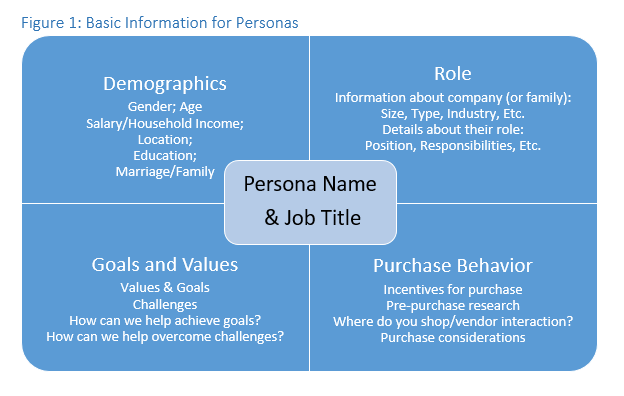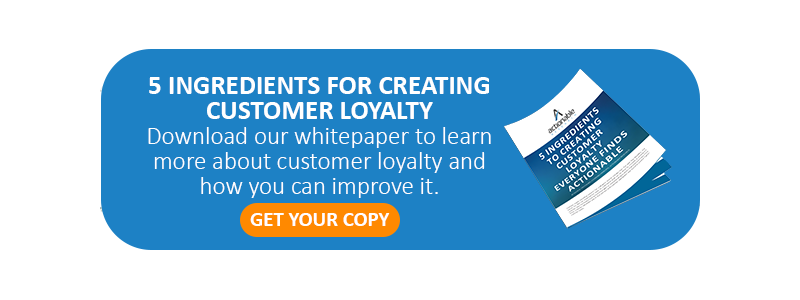
Sep 1, 2016 9:30:00 AM
These days, many companies are dealing with an immense amount of data. They have website and social media analytics, sales data, and custom market research all strewn across different parts of their organizations. This data is, certainly, useful in its own right - IT uses its data to improve customers’ online experience; sales uses its data to target customers; custom market research is used by R&D departments and product managers to develop and improve products and services.
And, of course, all of this data makes its way back to the Marketing Department to support messaging, branding, and other strategic efforts. But your data can do so much more – you already have it, why not optimize it? To get the most out of your data and analytics, use it to help build buyer personas.
The process of actually creating buyer personas can help companies better target messages and products to key market segments by outlining not only who they are (demographics), but also what their goals are, what drives their behavior, and where they are in the buying cycle. Personas go beyond mere market segmentation by focusing on customer needs, behaviors and thought processes. As a result, the objective of creating personas aims to bring together disparate strands of data to create a complete, dynamic, and well-rounded picture of your customers.
What Kind of Data Can I Utilize Throughout Persona Development?
Strictly speaking, any data that can help you define demographics, goals, behaviors and thought processes of your customers in connection to your products and services can be used to create a persona. This data will differ from company to company depending on the product and audience. For example, a company that sells salad dressing may want to know what drives customer food choices; a company that sells MRI machines to hospitals will want to know what drives the equipment procurement process. Many of these questions will be customized for a particular company. However, there are a few basic categories and types of data for persona development in Figure 1 below.

Where Can I Gather the Data I Need for Persona Development?
While rounding up the data needed to develop complete and accurate personas may seem overwhelming, it is probably easier than you think. As noted above, you likely have at least some of it available from sources you already have access to. Here are some of the usual suspects:
Site and Social Media Analytics
Website analytics can help you understand more about customers’ motivations by providing information about how the customer got to your site – email, social media, or outside links, the pages viewed, and the offers downloaded. Likewise, social media analysis can help you fill in the gaps for your personas. These types of analytics can be particularly useful for understanding some goals, values, and purchasing behavior.
Sales Data
Sales data has always been a treasure trove for marketing, but additionally it can help you better understand demographics (if that data is collected) and purchasing behavior for developing personas. Sales people within the organization also have a great deal of insight into your customers and will tell you how their sales pitches change depending on the type of customer they are approaching. Unbeknownst to some in marketing, their sales colleagues may have been using a form of the persona concept for years (without actually calling it by its fancy name).
Custom Research: Surveys and Interviews/Focus Groups
Once you have exhausted sources of secondary research, the most direct (and often best) way to really round out and complete your personas is through custom quantitative (survey) and qualitative (interviews/focus group) research. In other words, ask your audience directly about who they are, what matters to them, and how they make their decisions.
Surveys are always good for collecting demographic and other “close-ended” information such as roles and some types of purchase behavior. An added benefit of using surveys is being able to collect a lot of data points relatively quickly, which provides you with reliable information about the whole population you are interested in. This is helpful because when you see repeated patterns among customers and customer segments, you can start to whittle down and define personas (even if you are starting from very little existing information).
Qualitative tools like interviews and focus groups, on the other hand, are excellent for better grasping the “what, when, and why” questions associated with goals, values, and purchasing decisions. A perceived drawback of qualitative research is that it’s limited to small sample sizes. However, with careful sample selection— crafted by looking at already existing data — it is possible to get the right people to talk. Qualitative data is invaluable to the persona development process because it delivers data unable to be gathered through a close-ended survey.
Additional Sources
Some companies may already have data from custom research on-hand, if it was developed for other purposes. Partnering with a market research firm can help you evaluate your existing data and resources. The market research firm should be able to highlight which existing data should be taken into account, as well as pointing out informational gaps that require additional data.
Taking the time to create personas will not only help you get more out of your data, but will also help you better internalize your customers, ultimately creating products, services, and content that speak directly to them.

